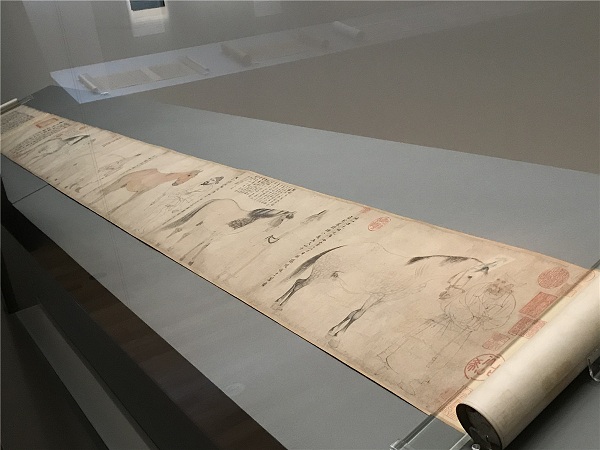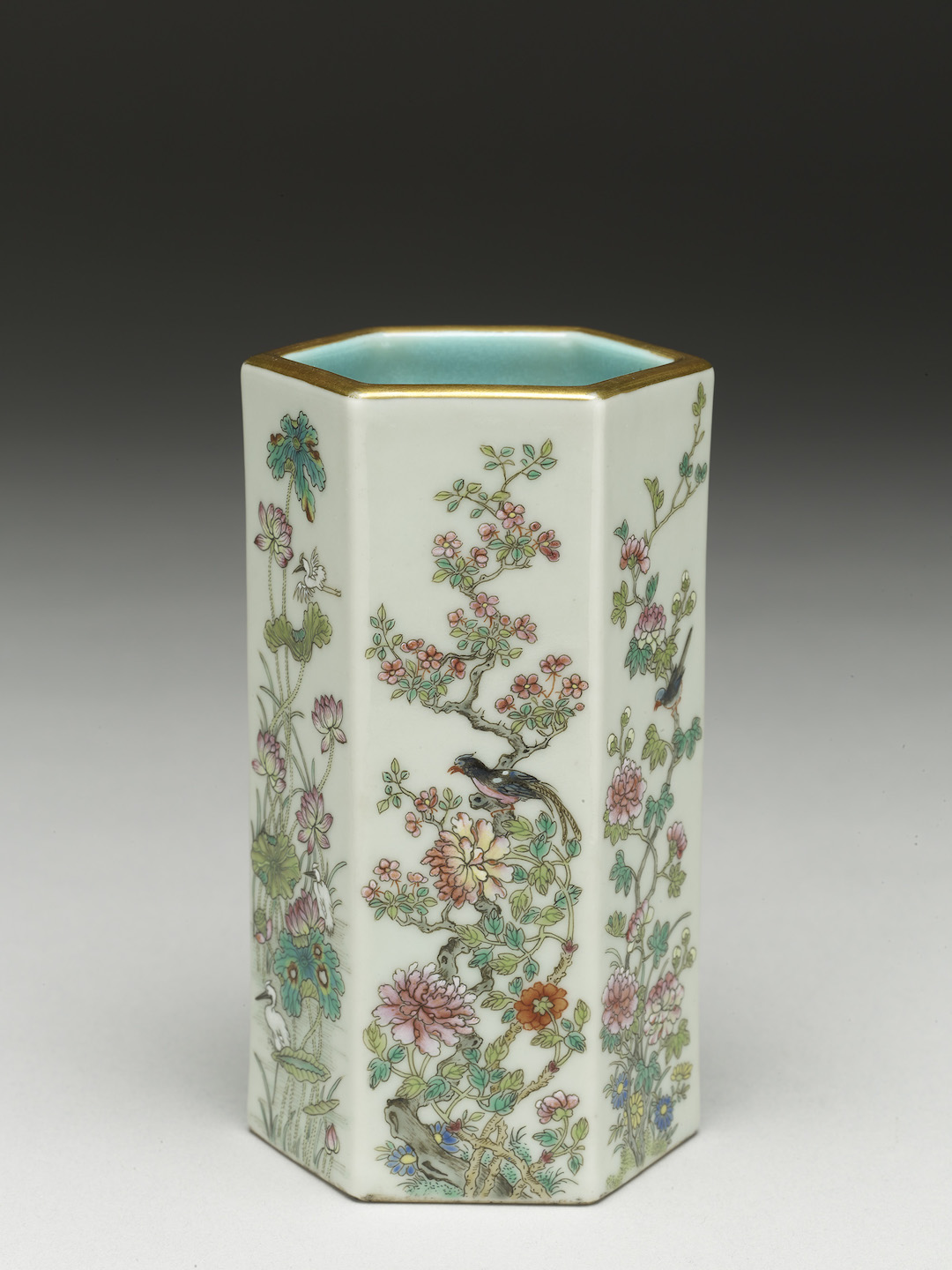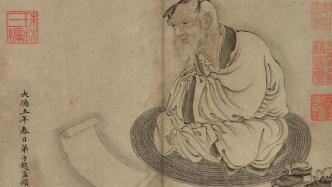
"Taoism" and "Taoism" are two related but different concepts, and they are not identical. "Taoism" is a religious entity that achieves the goal of "becoming an immortal and attaining the Tao" through the teaching or practice of "Tao"; as a religion, Taoism not only has its classics, doctrines, systems, and rituals, but also has its historical development The sect and field formed.
Most of the Taoist classics in the collection of the National Palace Museum in Taipei date from the Yuan and Ming dynasties. Although the volume is not as large as that of the Commentary, there are also rare and unique copies from the "Treasure House", including the Song Dynasty's "Ten Volumes of Commentary on the Tao Te Ching" written by Zhang An. Recently, "Tao Follows Nature - Taoist Classics Exhibition" was exhibited at the National Palace Museum in Taipei. The exhibition is divided into four sections: Basic Taoist Scriptures, Taoist Classics, Emperors and Tao, and Health Preservation and Longevity.
"Taoism" refers to the school of thought represented by Lao-Zhuang's thought among hundreds of pre-Qin scholars, and even the Huang-Lao school that was popular during the Warring States, Qin and Han Dynasties. It takes "Tao" as the ultimate realm and uses the principle of "pure nothingness and inaction" to deal with self-cultivation and even Governing the country; facing the relationship between man and the internal and external heaven and earth with the concept of "Tao follows nature". "Taoism" is a religious entity that achieves the goal of "becoming an immortal and attaining the Tao" through the education or practice of "Tao"; as a religion, Taoism not only has its classics, doctrines, systems, and rituals, but also its history. The sects and fields that developed. Such a specific religious inheritance is obviously different from the early Huang-Lao School or Alchemist thought; however, "Taoism" is the origin of the doctrine of "Taoism" belief, so the two should not be separated rashly.
Ji Xiaolan, the editor-in-chief of "Sikuquanshu", said that Taoism is: "combining hundreds of generations, broad and subtle". This feature is actually reflected in the development process of Taoism for 1800 years. It started with the collection of old and Zhuangzhuang classics in the pre-Qin Dynasty and continued over a long period of time. Religious activities include absorbing and digesting alchemy, numerology, prophecies, and even Buddhist scriptures since the Han Dynasty. Gradually, a vast and diverse collection of scriptures has been formed on the aspects of doctrines and precepts, internal and external cultivation, fasting rituals, etc.
From the Sui and Tang Dynasties to the Northern Song Dynasty, due to the respect of the royal family and nobles, Taoist beliefs flourished and had a great social influence. Its moral thoughts, Qi training and health preservation, talismans, mantras, rituals and regulations also became more perfect. Since the late Tang and Northern Song Dynasties, the Jindan Taoist sect, which focuses on practicing inner elixirs, has emerged. By the Southern Song, Jin and Yuan Dynasties, new Taoist sects such as Quanzhen, Taiyi, and Zhendao appeared in North China, and new Taoist sects such as Shenxiao, Qingwei, and Jingming appeared in the south. Many emperors of the Ming Dynasty had close ties with Taoism, such as Yongle and Jiajing. By the Qing Dynasty, as the royal family's belief was mainly Buddhism, the development of Taoism gradually declined and was not as good as in the previous dynasty.
Most of the Taoist classics in the collection of the National Palace Museum in Taipei date from the Yuan and Ming dynasties. Although they are not as numerous as the Shidong, there are still rare and unique copies from the "Tibetan Palace". This exhibition is divided into four units: the fundamental Taoist scriptures, the essence of Taoism, emperors and Tao, and health preservation and longevity.
Fundamental Taoist Scripture
When Taoists enter Taoism, they must also undergo the "Three Refuges and Five Precepts" ceremony. The "Three Refuges" refer to taking refuge in the Three Treasures of Taoism, Sutras and Masters. Taoism attaches great importance to classics and regards them as an important way to inherit Taoism; "Tao Zang" classifies Taoist elixirs into "three caves and four supplements", collectively called "seven parts" (Dongzhen, Dongxuan, Dongshen; Taixuan, Taiping, Taiqing, Zhengyi), the three caves are further divided into twelve categories, which are thirty-six divisions. Zheng Qiao (1104-1162) of the Southern Song Dynasty "General Records." "Yiwenlue" divides the Taoist scriptures into twenty-five categories, the first six of which are Laozi, Zhuangzi, Zhuzi, Yinfu Jing, Huangting Jing, and Shen Tongqi. The various Taoist sects that multiplied during the Yuan and Ming dynasties each had their own emphasis on scriptures, alchemy books, alchemy, and scientific rituals; in terms of fundamental classics, they gradually evolved into the "Five Classics and Four Books" that must be read by both internal and external practitioners. Among them, the five classics for internal cultivation are Yin Fu Jing, Tao Te Ching, Huang Ting Jing, Qing Jing Sutra, and Dragon and Tiger Sutra; while for external cultivation, the Five Classics are the Savior Sutra, Jade Emperor Sutra, Three Officials Sutra, Beidou Sutra, and Yushu Sutra. This unit selects rare annotations from the Taoist scriptures collected by the institute.
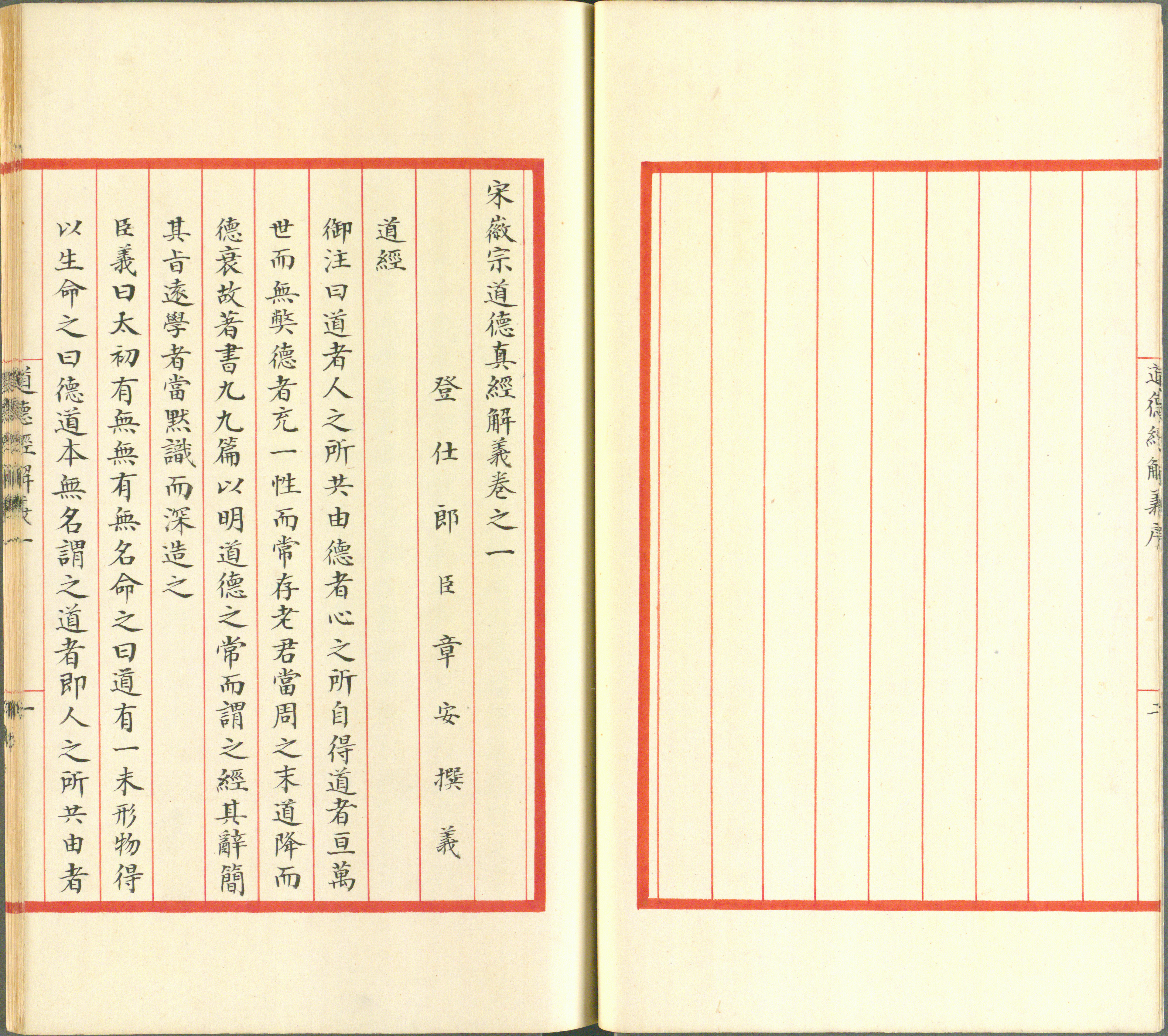
Ten Volumes of Commentary on the Tao Te Ching (Song Dynasty) Notebook Edition by Zhang An, Wanwei Collection Edition
The author interprets the meaning according to Song Huizong's "Annotations to the Tao De Zhen Jing" (the original book has been lost). Under Huizong's annotations, he excerpts one by one and marks it with "Chen Yi said". Zhang An (date of birth and death unknown), a native of the Southern Song Dynasty, was a former official. This book is included in the Jade Jue category of the Dongshen Department of the Zhengtong Taoist Canon, and is called "The Interpretation of the Dao De Zhen Jing by Emperor Huizong of the Song Dynasty".

Volume 1 of the Moral Treasure Chapter (Song Dynasty) written by Ge Changgeng and published in Ming Dynasty, Zhao Mengfu's manuscript
"The Tao Te Bao Zhang" explains Laozi's Tao based on the inner alchemy and the principles of mind and nature, reflecting the thought of the integration of Confucianism, Taoism and Buddhism. Ge Changgeng (1194-1229), whose courtesy name was Ruhui, was adopted as the son of the Bai family and changed his name to Bai Yuchan. He lived in seclusion in Wuyi and worshiped Chen Nan as his teacher. He wore Taoist attire and traveled around South China. He was known as Mr. Ziqing in the world and was revered by the Quanzhen sect as one of the five southern ancestors. Zhao Mengfu (1254-1322) once copied it in regular script and included it in Sikuquanshu during the Qing Dynasty.
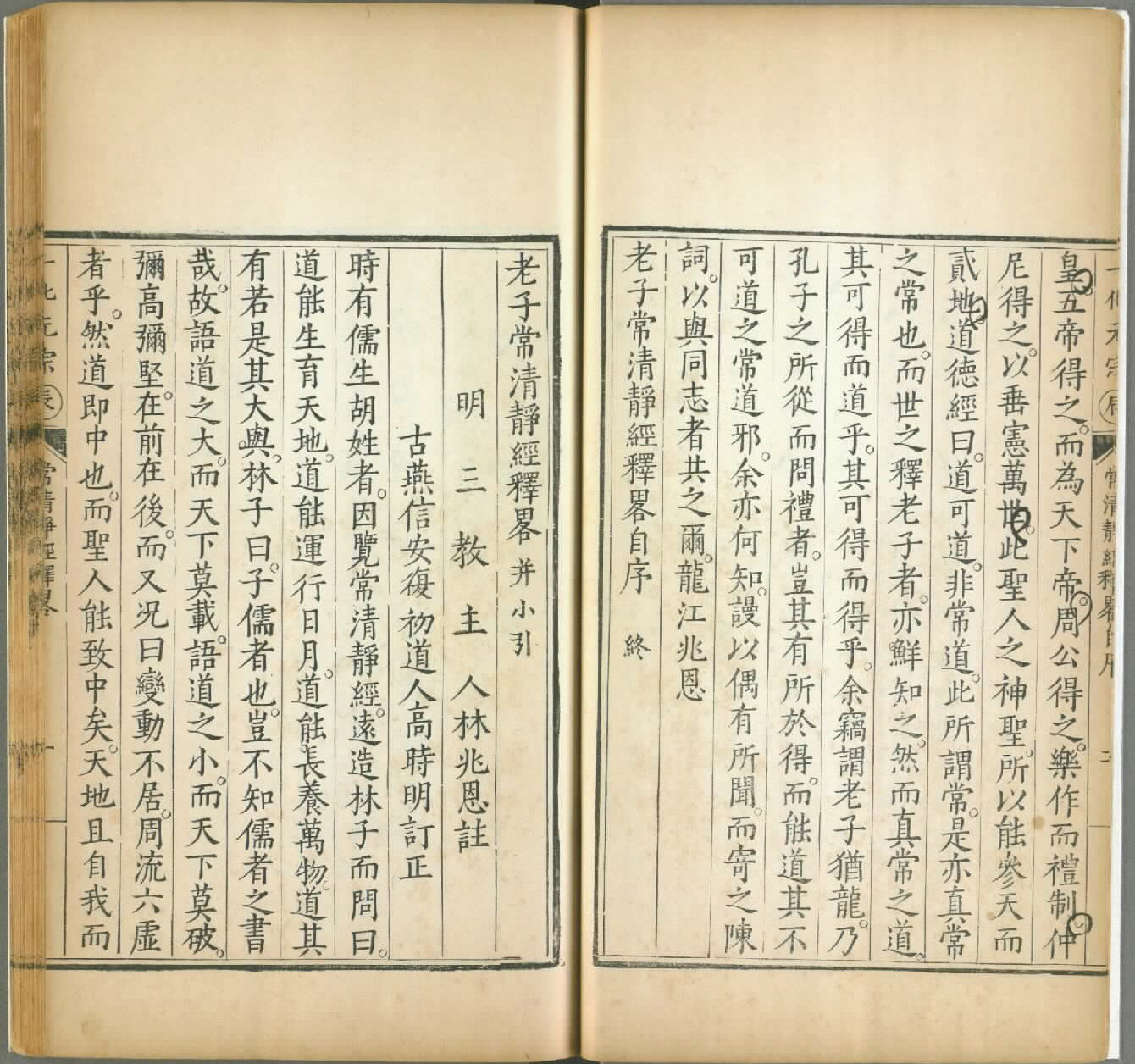
Yihua Yuanzong Laozi Chang Qingjing Sutra (Ming Dynasty) Lin Zhaoen, edited by Gao Shiming, annotated the fourth year of Tianqi (1624)
This sutra is included in the "Orthodox Taoist Canon" Dongshen Department. Taoism says that when Taishang Laojun traveled to the Kunlun Mountains in the west, he taught the "Eternal Peace Sutra" to the Queen Mother of the West. The immortal passed it down to Ge Xuan's writings and handed it down to the world. This annotation was written by Lin Zhaoen (1517-1598) of the Ming Dynasty. Lin was from Putian, Fujian. He was dissatisfied with the idea of merging the three religions at that time, and gradually developed and founded the "Trinity Sect". This religion is still spread in Chinese cultural areas today, and its inheritance also exists in Taiwan.
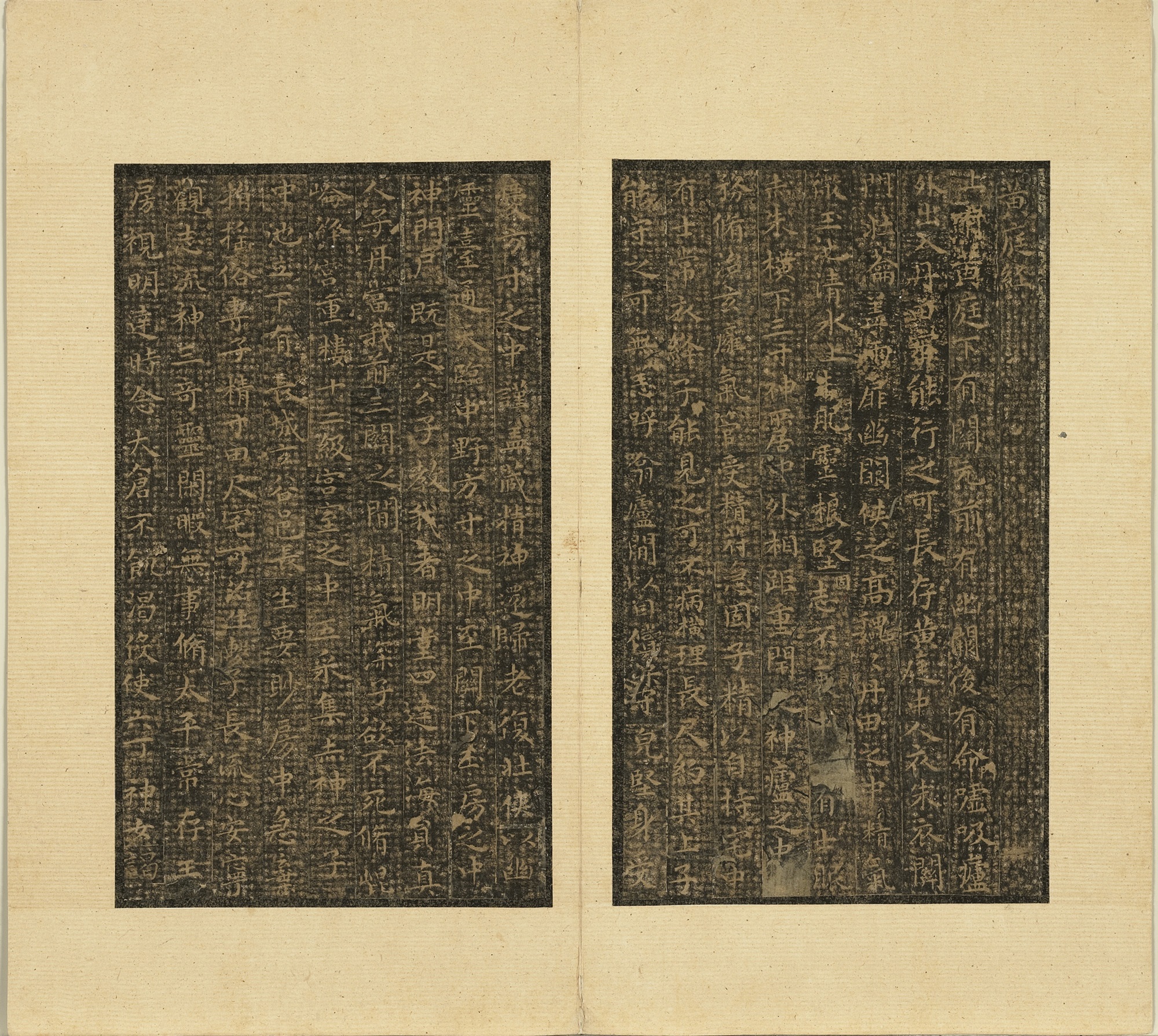
The Song Dynasty extended the Jin and Tang Dynasties to the small regular script of Wang Xizhi. Wang Xizhi extended the Song Dynasty to the Jin and Tang Dynasty regular scripts
The existing "Huangting Jing" is divided into "Jade Sutra of the Inner Scene of the Huangting" and "Jade Sutra of the External Scene of the Huangting". Later, the "Jade Sutra of the Middle Scene of the Huangting" was added and included in the Dongxuan Department of "Zhengtong Dao Zang". This book was written around the Wei and Jin Dynasties. However, there are many editions, and the presence and order of words and sentences are different in each. The whole book combines the Taoist theory of keeping one's thoughts and spirits, cherishing treasure essence and loving qi with the theory of viscera from doctors, thus explaining the method of immortality. In the late Tang Dynasty, it was combined with the alchemy theory of "Shen Tongqi" and became an important classic for the practice of inner alchemy by the inner alchemy sect since the Song and Yuan Dynasties. It is still the main basis for Taoist health-preserving formulas. The "Huang Ting Jing" written by Wang Xizhi is the most famous manuscript of this sutra. Its content is the current version of the "Huang Ting Jade Sutra". The original work has been lost. It was copied and engraved on stone in the Song Dynasty. The Song rubbings on display this time are in the collection of the hospital. The date and place are clearly noted at the end of the article: "Written in Wushanyin County on May 24th, the twelfth year of Yonghe (356)."
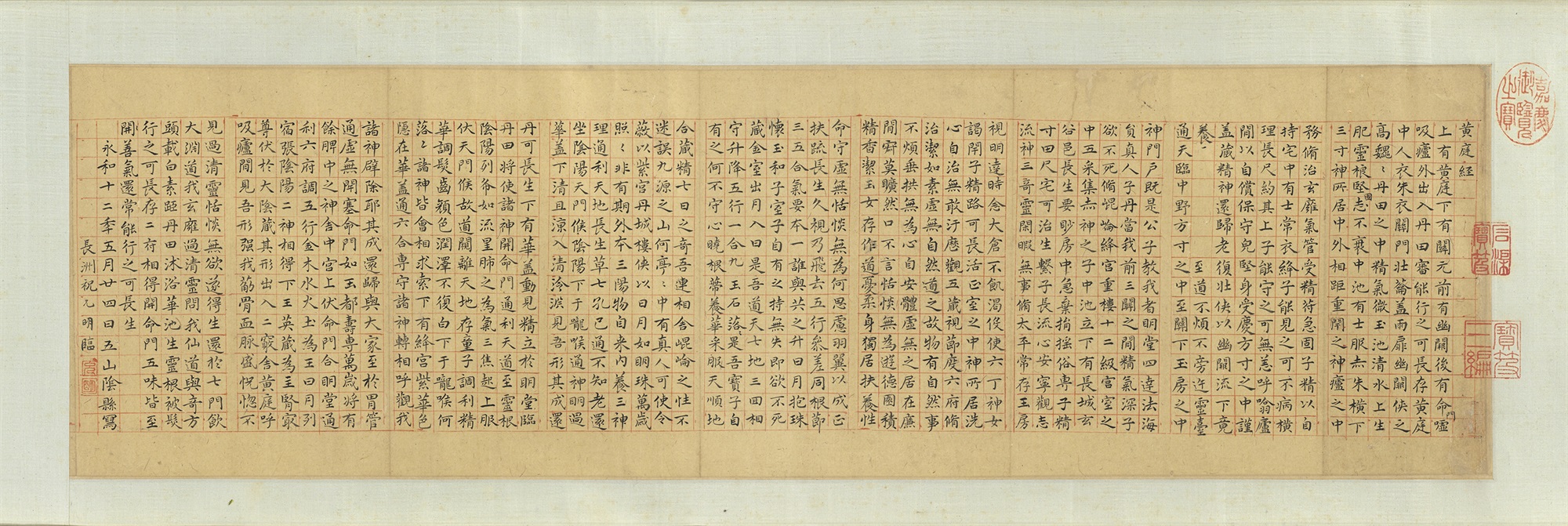
Zhu Yunming Lin Huang Ting Jing Zhu Yunming Ming Wuzong Zhengde fifth year (1510)
It is said that Xi's nature is good for geese. "Book of Jin" records: "There was a Taoist priest in Shanyin who raised geese well. He looked at them and was very pleased with them, so he insisted on selling them. The Taoist priest said: In order to write the Tao Te Ching, we should gather a group of people. Xi Zhi happily finished writing and returned with the geese in the cage, feeling very happy." Later historical records also recorded this incident, but many records indicate that what Xizhi wrote was the "Huang Ting Jing", so this post is also called "Exchange the Geese Post". Many famous calligraphers from past dynasties have written about this post. This exhibition is the original work of Zhu Yunming (1461-1527), one of the "Four Talents of Wuzhong" in the Ming Dynasty.
Taoist scriptures
With the long-term development of Taoism, the types and quantities of Taoist classics have become more and more complex. According to modern book classification, Taoist classics can be summarized as the classics department that teaches the doctrines of the Three Purities, the alchemy department that teaches the rituals of painting talismans and fasting, and the professors. The Department of Medicine, which cultivates golden elixirs and nourishes the inner elixir, and the Department of Taoism and Precepts, which establishes the ethical standards of Taoism.
Regarding the official compilation of "Dao Zang", it was first ordered by Xuanzong in the Tang Dynasty to search and compile "Dao Zang"; Song Zhenzong, Song Huizong, Jin Shizong, etc. also ordered the compilation, but these early original versions of "Dao Zang" have long since died Lost, only his name remains. Although our collection does not include the "Zhengtong Dao Zang" published in the 10th year of Zhengtong Yingzong of the Ming Dynasty (1445) and the "Wanli Xu Dao Zang" published in the 15th year of Wanli Emperor Shen Zong of the Ming Dynasty (1607), the essence of the Dao Zang compiled by Zhang Junfangcuo, a Taoist during the reign of Emperor Zhenzong of the Song Dynasty, is not included. Cheng's famous Taoist work "Yunji Qizhuan" has many rare and rare copies in the courtyard. The most precious one is the three volumes and one volume of "Yunji Qizhuan" published by the Quanzhen School in the early Yuan Dynasty. The only two rare copies.

The newly engraved image supplements the six volumes of Sou Shen Ji (Ming Dynasty). Luo Maodeng wrote the Ming Dynasty Jinling Tang Fuchun edition.
"Sou Shen Ji" was written by Qian Bao (?-336) of the Jin Dynasty. The original book has been scattered and was compiled into a book by later generations. This publication was published in the "New Carved Image Supplement to Sou Shen Ji" in the first year of Wanli (1573). It was compiled under the influence of "Sou Shen Ji". This volume is the earliest edition published by Fuchuntang (Jinling Book Engraving Workshop during the Jiajing period) and contains 159 prints of gods from the three religions. The exhibition page is "Tianfei" (Mazu). During the Kangxi period, Mazu was named "Queen of Heaven".
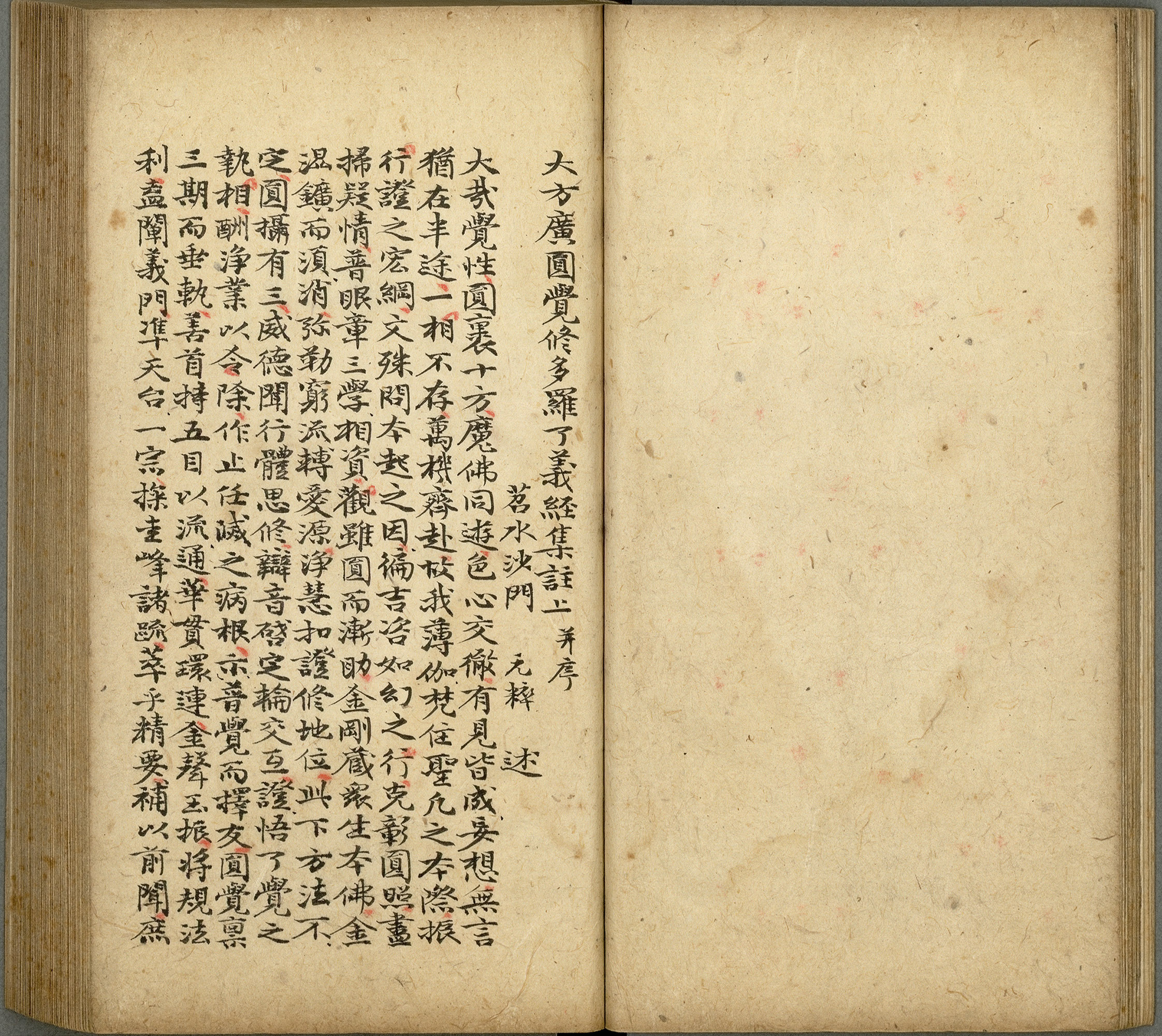
Three volumes of Dafang Guangyuanjue Shutaluo Yi Jing's Annotations (Song Dynasty), exemplified by Yuan Cui's Annotations, handwritten by Xu Daoguan in the second year of Yanyou, Yuan Dynasty
This three-volume thread-bound manuscript was copied by a Taoist named Xu Daoguan in Yuqingguan, Songjiang Prefecture in the second year of Yanyou (1315). According to his friend Yuejiang Zhengyin, Zen Master Xu Daoguan was diligent in copying scriptures throughout his life, and he was cremated after his death. Ruiying relic. "Collected Annotations of Dafang Guangyuan Juesu Duoluo Yi Jing" was written by Yuan Cui, a monk of Tiantai Sect in the Southern Song Dynasty. It was written in the seventh year of Jiading (1214). Yuan Cui belonged to Beifeng Zongyin (1149-1214).
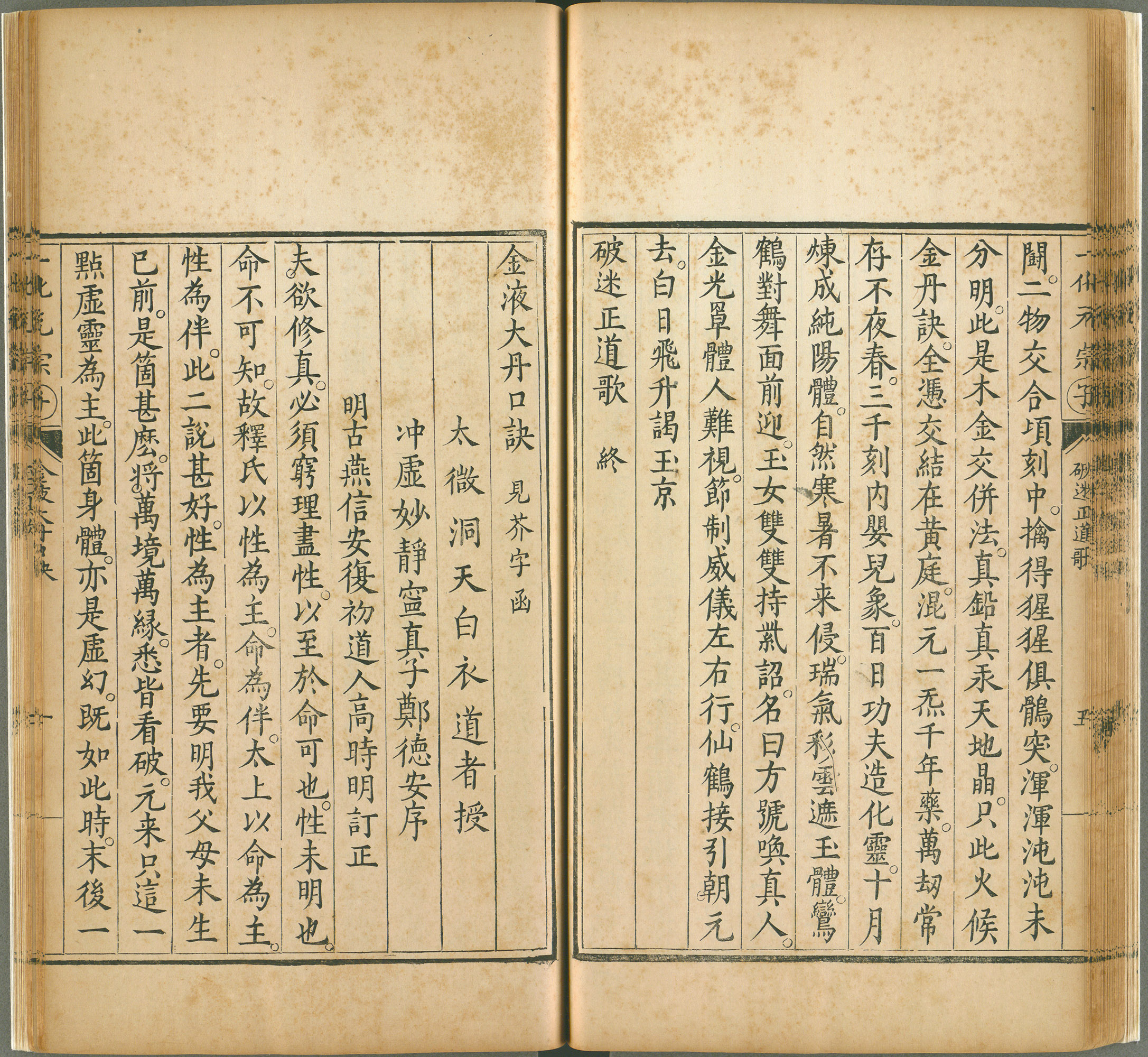
Fifty-four volumes of Yihua Yuanzong (Ming Dynasty) compiled by Gao Shiming and published in the fourth year of Ming Dynasty Qi
A total of twelve volumes, including forty-nine Taoist scriptures, all edited and edited by Gao Shiming. At the end of the volume, "Yi Hua Yuan Zong Zhi Yao" postscript reads: "In the fourth year of the Great Tomorrow (1624), Jiazi Zhongqiu Wangri, Gu Yan Xin'an returned to the Taoist priesthood At the height of his career, Mingxun Muji bowed his head to pay homage to the book." Gao Shiming (?-1644) was an eunuch in the imperial court from the late Ming Dynasty to Chongzhen period, and was in charge of the seal of the rites supervisor. In the seventeenth year of Chongzhen (1644), Li Zicheng captured Beijing and Gao Gao set himself on fire in the palace to die as emperor.
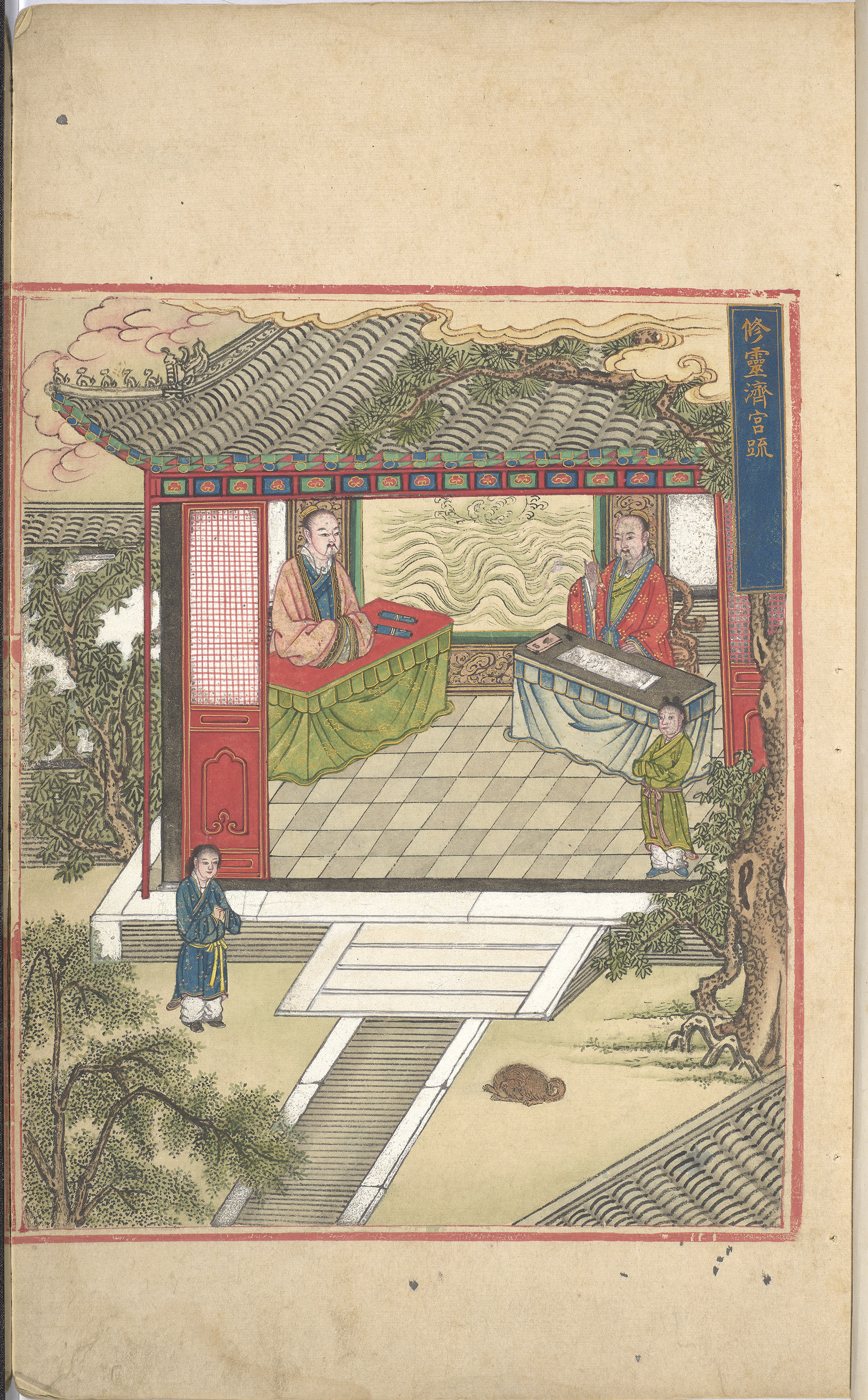
Xu Xianhanzao, Yuan Dynasty and Chen Menggen compiled the Ming Dynasty Notes
The postscript records that this book was compiled by Chen Menggen in the ninth year of Dade in the Yuan Dynasty (1305), and was later included in "Wanli Xudao Zang". This book is a compilation of more than 200 poems, songs, and prose of various types, including the worship of Xu Xian in various places during the Five Dynasties, Song and Yuan Dynasties. They either wrote for Xu Xian, praised Xuxian's merits, or recorded Yinghua's deeds, hence the name "Xuxian Hanzao" . "Xuxian" refers to the brothers Xu Zhizheng and Xu Zhi'e of the Tang Dynasty. From the Five Dynasties to the Yuan and Ming Dynasties, many folk temples were built to worship this god.
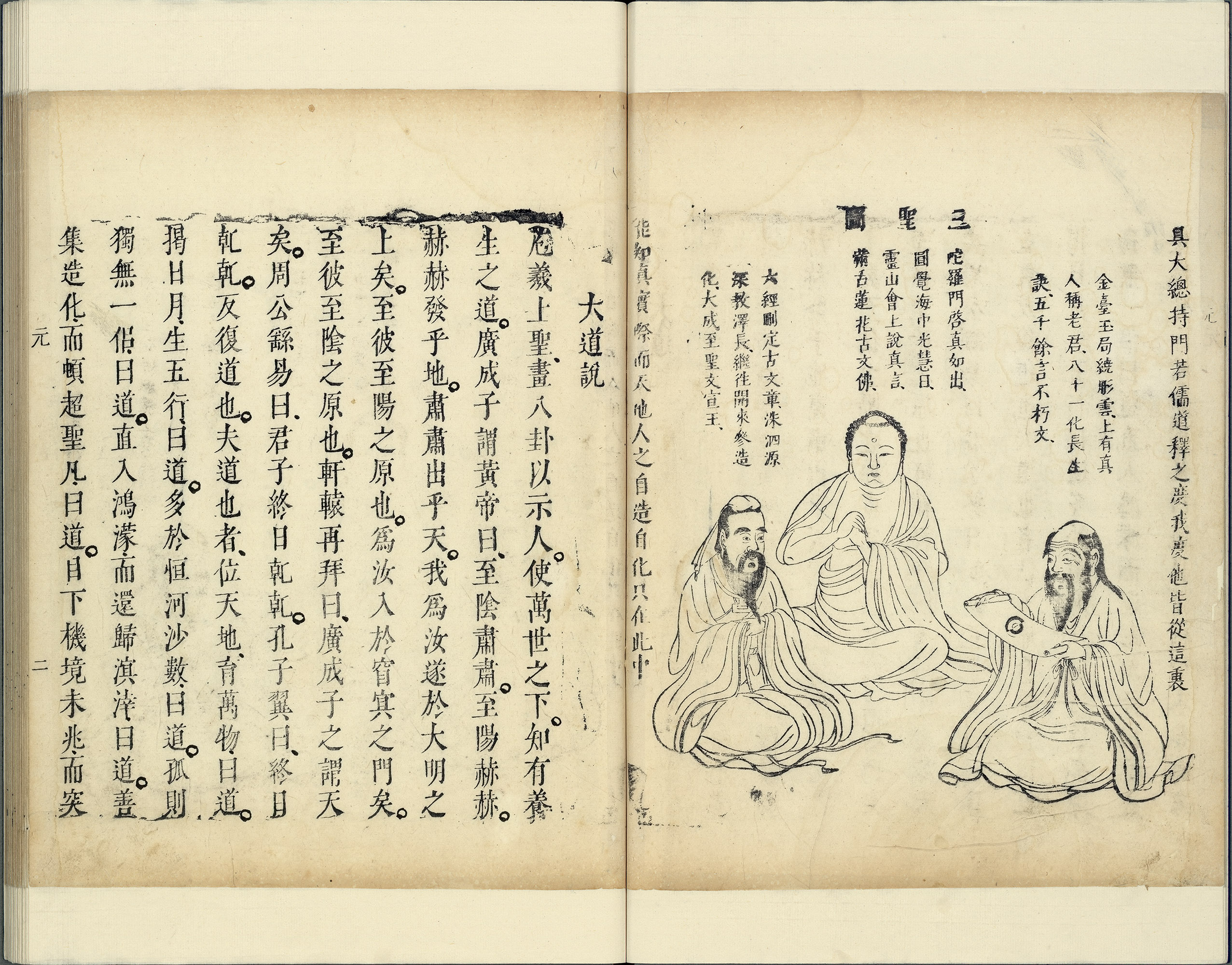
The Guidance of the Ten Thousand Gods on the Dual Cultivation of Life and Life, published by Wu Zhihe in the 43rd year of Wanli in the Ming Dynasty
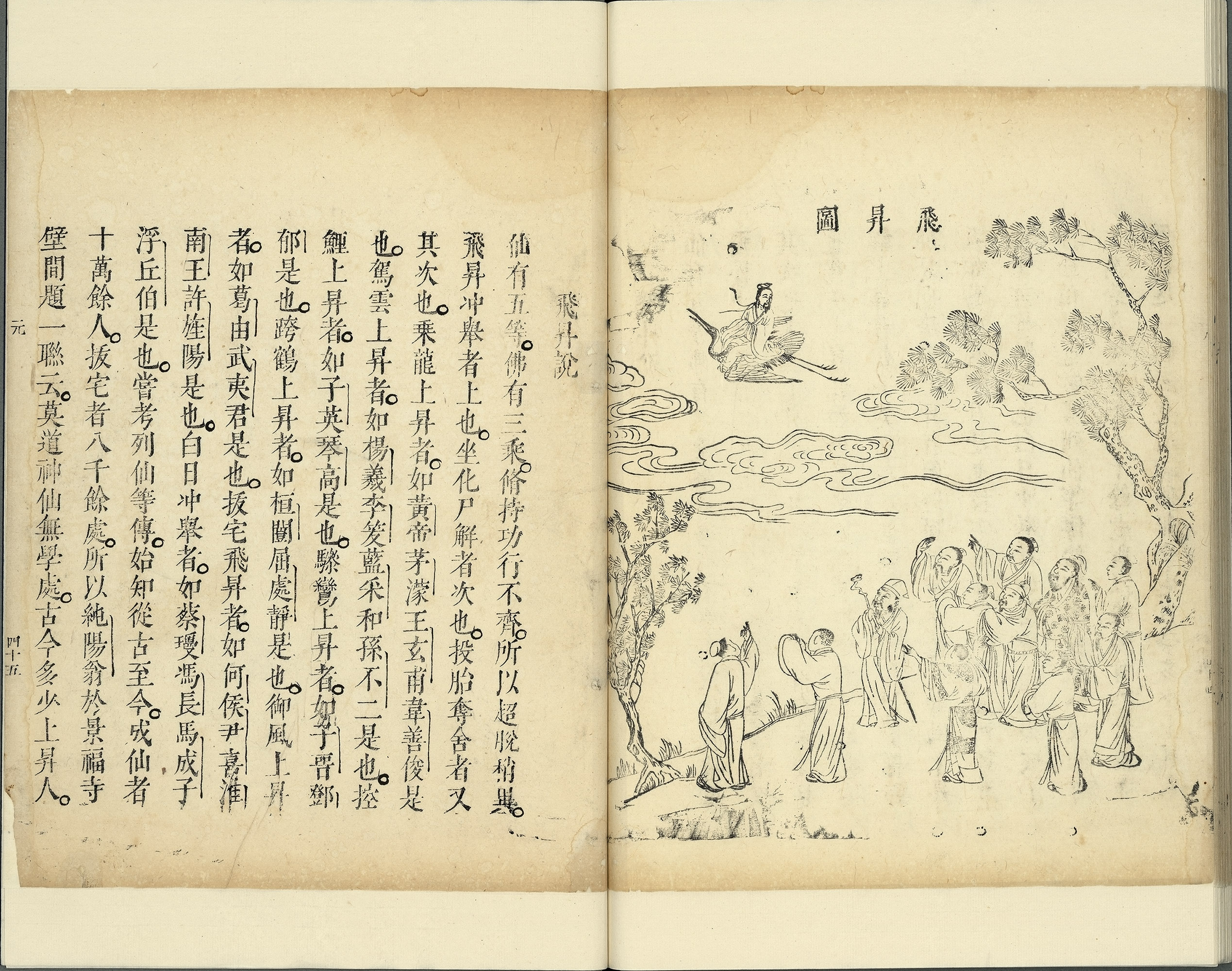
The Guidance of the Ten Thousand Gods on the Dual Cultivation of Life and Life, published by Wu Zhihe in the 43rd year of Wanli in the Ming Dynasty
The author is not identified, but it is said to be written by a disciple of Yin Zhenren (Yin Xi). The book is divided into four volumes: Yuan, Heng, Li, and Zhen, with rich illustrations; the content mainly introduces the cultivation of inner elixirs and the method of cultivating and guiding Qi. According to research by scholars, it should be a summary of inner alchemy techniques by Taoist priests of the Quanzhen sect in the middle and late Ming dynasties. The Quanzhen sect still regards this scripture as the main basis for Qi training.
Emperor and Tao
As early as the Qin Emperor and Han Wu dynasties, it can be seen that emperors had contacts with alchemists in order to seek longevity. Since Taoism gradually took shape at the end of the Eastern Han Dynasty, many emperors and Taoist priests had close contacts, such as Emperor Wu of Liang and Tao Hongjing, and Emperor Xuanzong of Tang Dynasty. Sima Chengzhen, Song Huizong and Lin Lingsu, Genghis Khan and Qiu Chuji, etc. Although the Mongolian and Yuan emperors believed in Tibetan Buddhism and ordered the burning of the "Tao Zang" scriptures, they also summoned Taoist priests to the capital many times to pray for rain. For example, Kublai Khan (1215-1294), the founder of the Yuan Dynasty, officially conferred the title of "Tianshi" and summoned The 36th Heavenly Master Zhang Zongyan (1244-1292) ordered him to govern Taoism in the south of the Yangtze River. Chengzu of the Ming Dynasty believed that he was the reincarnation of Zhenwu. Because Wudang Mountain was said to be the residence of Zhenwu, he vigorously built Wudang Taoist Temple. Among the Ming emperors, the most obsessed with Taoism was Ming Shizong. He doted on Taoist priests Shao Yuanjie and Tao Zhongwen, and held memorial ceremonies in the palace day and night. Most of the Qing emperors were close to Buddhism. Only Emperor Yongzheng also worshiped Buddhism and Taoism. He not only made alchemy and worshiped in the palace, but also got close to Lou Jinyuan (1689-1776), a Taoist priest of the Zhengyi sect. He believed that Zhang Ziyang (987-1082) was the founder of the Southern Sect of the Quanzhen sect. ) is similar to Zen Buddhism, so Lou Jinyuan's quotations and Zhang Ziyang's "Wuzhen Pian" were compiled into his "Yu Selection of Quotations".
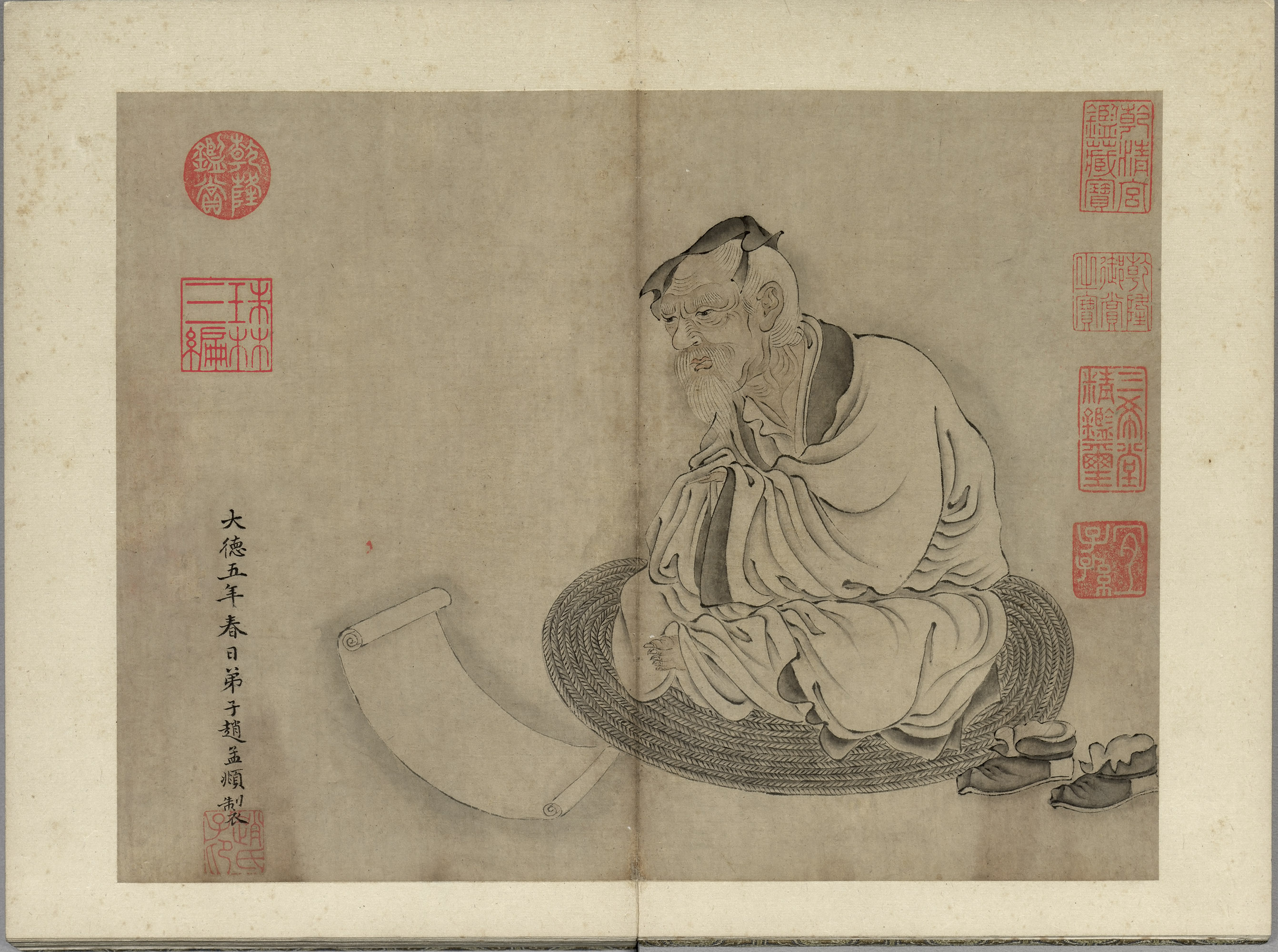
Taishang Cave Xuan Lingbao Immeasurable Man's Excellent Sutra, Ming Zhu Silan imitated Yuan Dynasty Zhao Mengfu's manuscript
This sutra is referred to as "The Sutra of Saving People" and is regarded by Taoists as "the sect of all dharma and the first of all sutras". Compiled by Taoist priests such as Ge Chaofu in the late Eastern Jin Dynasty, it is a spiritual treasure series classic. In Dunhuang documents, there are more than ten manuscripts of "The Book of Saviors", which shows its wide spread. This scripture has been the basis for examining Taoist priests in the Tang and Song Dynasties. The Jin Dynasty stipulated that the examination of Taoist priests and women's crowns should be held every three years, which also included the subject of "The Book of Saviors". The first chapter of Zhengtong Taoist Canon of the Ming Dynasty contains sixty-one volumes of "Lingbao Wumei Measuring People's Excellent Scripture". The first volume is the ancient "Saving People Sutra", and the remaining sixty volumes are the ancient "Saving People Sutra" written by the Shenxiao sect. Based on this, it was written during the Zhenghe period of the Northern Song Dynasty (1111-1118).
The scripture mainly describes how Tai Dao Lord Lingbao Tianzun, who lived in Shiqingtian in the past, was taught by Yuanshi Tianzun related to Taoism. The number of commentaries on this sutra is the largest among all Taoist sutras. Through the presentation and interpretation of this sutra, Taoism has gradually formed its own unique and complete spectrum of gods and immortals and its view of heaven.
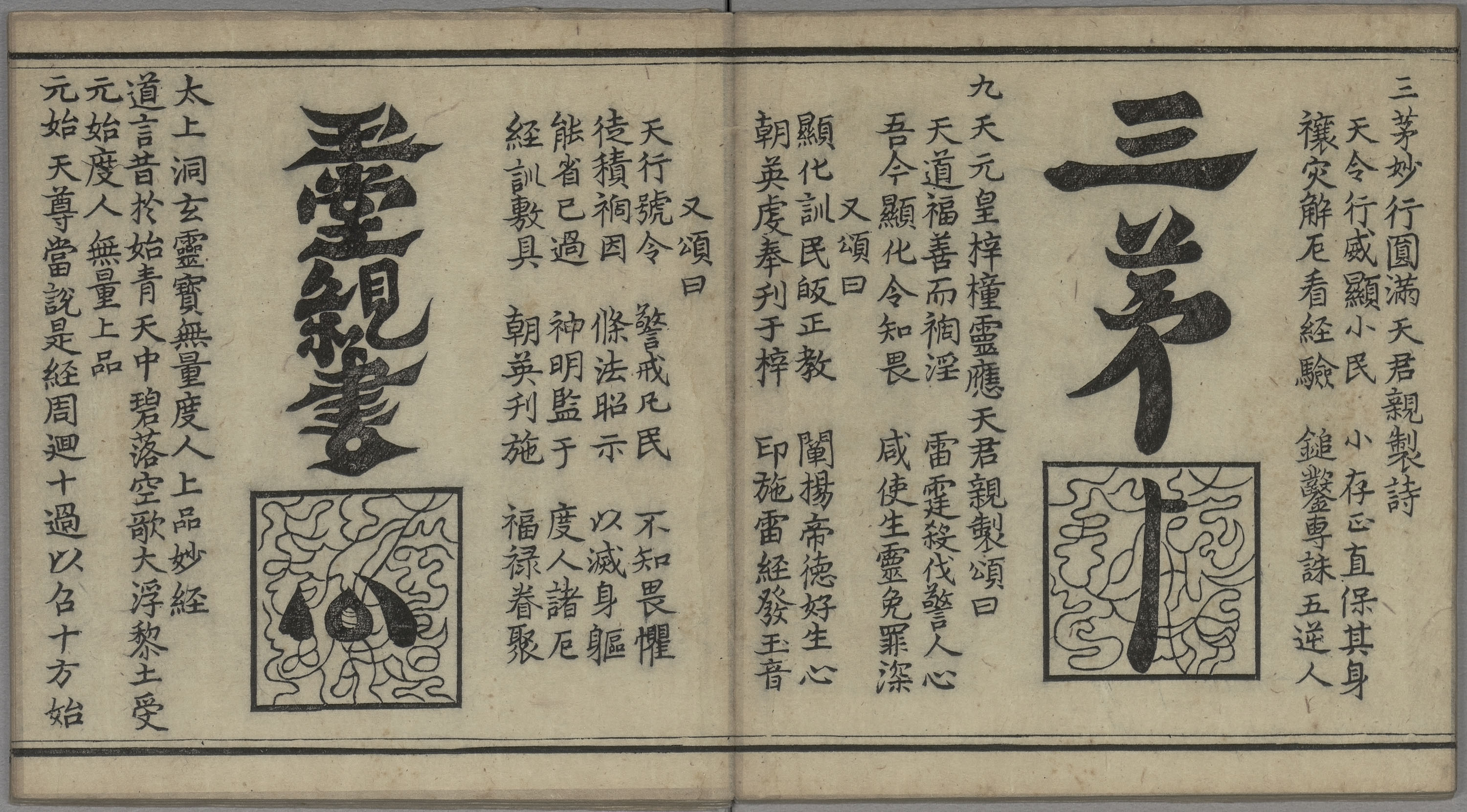
Yushu Sutra and other seventeen kinds of sutras for saving people, published in Xuande period of Ming Dynasty
This collection of seventeen Taoist canons is a rare and unique edition produced during the Xuande period of the Ming Dynasty, and "The Book of Saviors" is the fifth classic among them. The sutras are printed in ink on thin paper. Although the sutras are folded, the format is long horizontally and short vertically, which is different from the normal format of Buddhist sutras that are long vertically and short horizontally. Bright yellow curly grass satin-faced sutra robe with imitation Tibetan sutra paper inscriptions on it.
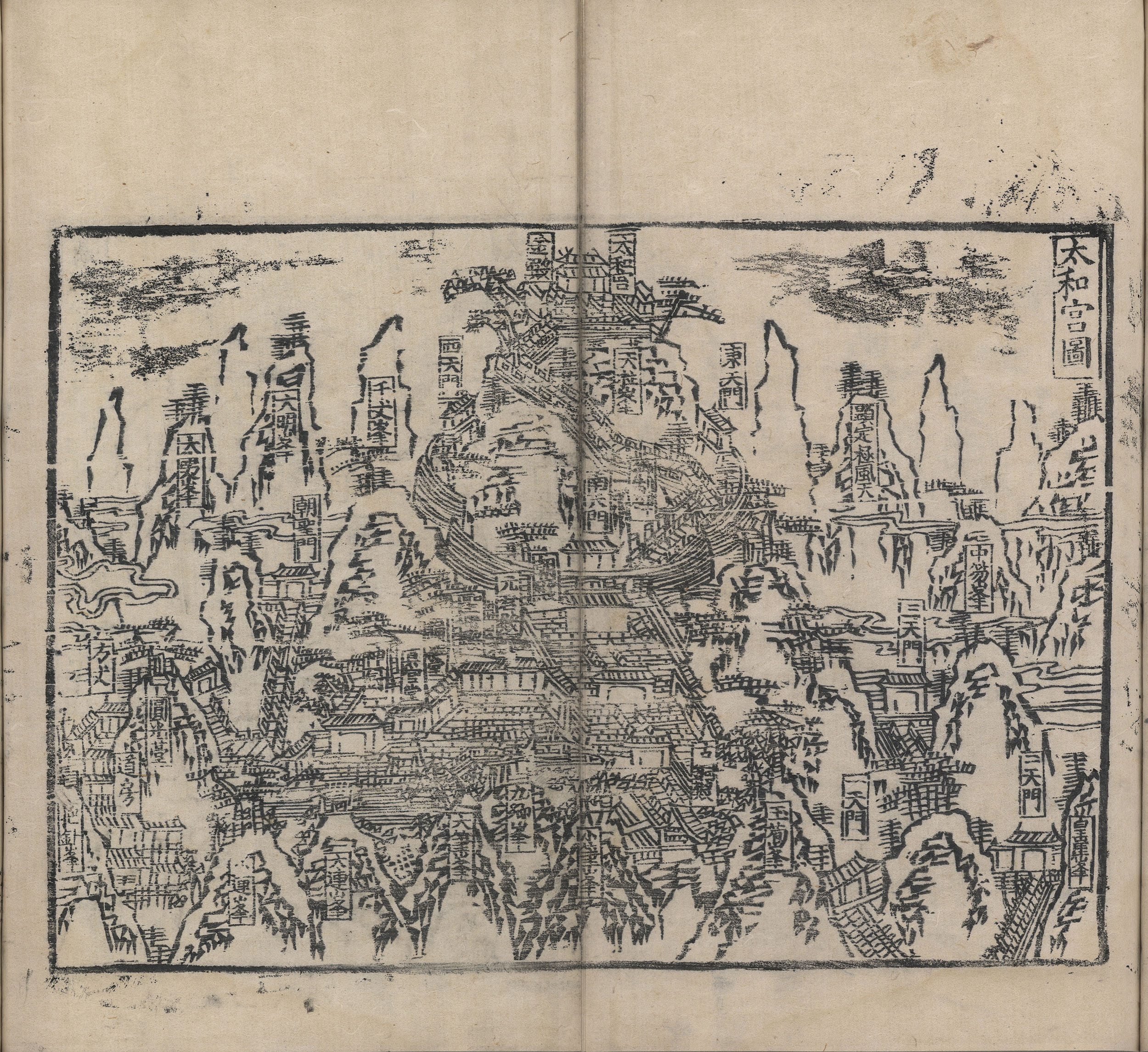
Five volumes of Dayue Zhilue (Ming Dynasty) written by Fang Sheng, Ming Jiajing Bingshen (15th year, 1536) original publication of Wuyuan Fangshi
Fang Sheng (1478-?), the third and sixty-sixth Jinshi in the second year of Jiajing (1523), was awarded the magistrate of Yongjia County, Zhejiang Province at the age of forty-six. He once served as the right counselor of the Chief Secretary of Huguang and the promotion officer of Wudang Mountain. He also wrote "Yi Yu Ji" and "Nan Yin Lu". In the fifteenth year of Jiajing's reign (1536), he compiled the five-volume "Dayue Zhilue", which included detailed engravings of various palaces and temples on Mount Taihe, which is of great reference value.

Laozi's Tao Te Ching, Ming dynasty gold manuscript
This sutra is folded and bound into two volumes, written in regular script with gold and gold on porcelain blue paper. The first page of the volume is painted with "Laozi riding an ox", the last page of the volume is painted with two generals from the sky, and the top and bottom of each volume are painted with five-clawed twin dragons chasing the sun. The inner text is not divided into thirty-seven chapters of the upper scripture and forty-four chapters of the lower scripture like "He Shang Gong Zhang Ju", but chapter thirty-two of the upper letter and forty-nine chapters of the second letter. The postscript reads "Wu Xing, Zhao Mengfu, Xun Xun and Mu Jing wrote on the day before April in the third year of Dade's reign". Zhao Mengfu did live in Wuxing in the third year of Dade (1299). However, the writing style of this manuscript is different from the "Tao De Jing" written in regular script and ink in the third year of Yanyou (1316) by Zhao Mengfu. The manuscripts of the Buddhist scriptures are almost identical, so they should belong to the Ming Dynasty manuscripts.
Health and longevity
Since ancient times, medicine and Taoism have been inseparable, so there is a saying that "medicine and Taoism have the same origin". Both can be traced back to witchcraft in primitive society. Witches pray for blessings with their forbidden incantations and are engaged in the work of serving ghosts and gods; doctors, in addition to the well-known use of herbal medicine and acupuncture to treat diseases, also have the tradition of "Taoist medicine". During the Qin and Han Dynasties (BC221-AD220), alchemist medicine, which integrated gods, prescription techniques, and magic numbers with yin and yang and the five elements, became popular in China. At the end of the Eastern Han Dynasty, the Taoist system gradually took shape. It integrated witchcraft, alchemist medicine, Taoism and traditional medical classics with each other, used medicine to preach religion, and used medicine to promote Taoism, forming a unique Taoist medicine. Its connotation includes: theoretical systems such as the correspondence between heaven and man, form, energy and spirit, yin and yang and five elements, as well as treatment methods such as bigu, taking food, external elixirs, medicinal pillows, blessings, talismans, mantras, etc. It also covers inner elixirs, daoyin and so on. , Cunsi, Fang and other health-preserving concepts. These methods of treating diseases and maintaining health and extending life are not only of great significance to the ancients, but also have a profound impact on today's society.

The Secret Book of Jade Letters, one of the Yimen Guangshu published by Jinling Jingshan Shulin during the Wanli Period of the Ming Dynasty (1573-1620), without author
This time, the "Three Corpses Picture" from "The Secret Book of Jade Letters" is on display. Taoism believes that there are three corpses in the human body, also known as three insects, three corpse insects, and three pengs. The three corpses are originally invisible souls, ghosts and gods that often reside in the human spleen, attracting external evil spirits and are evil spirits that poison the human body. Later, Taoist literature combined the three corpses with the actual insects existing in the human body, and even created a new image of the three corpses-San Peng. The upper corpse is Peng Ju, who likes carriages and horses, and admires sounds and sex; the middle corpse is Peng Zu, who likes five flavors and is greedy for five colors; the lower corpse is Peng Yuqiao, who admires women. All three corpses like to cause people to make mistakes. Since the three corpses rely on grain energy to survive in the human body, if people do not eat grains and cut off the source of the essence of the three corpses, the three corpses will not be able to survive in the human body. Therefore, if you want to live longer, you must use the method of eating Qi and fetal breathing, or eat Poria, Phytolacca root, Polygonatum, Jujube and other medicines to fast from grains and achieve the goal of eliminating grains.
(The graphics and text in this article come from the official website of the National Palace Museum in Taipei.)
